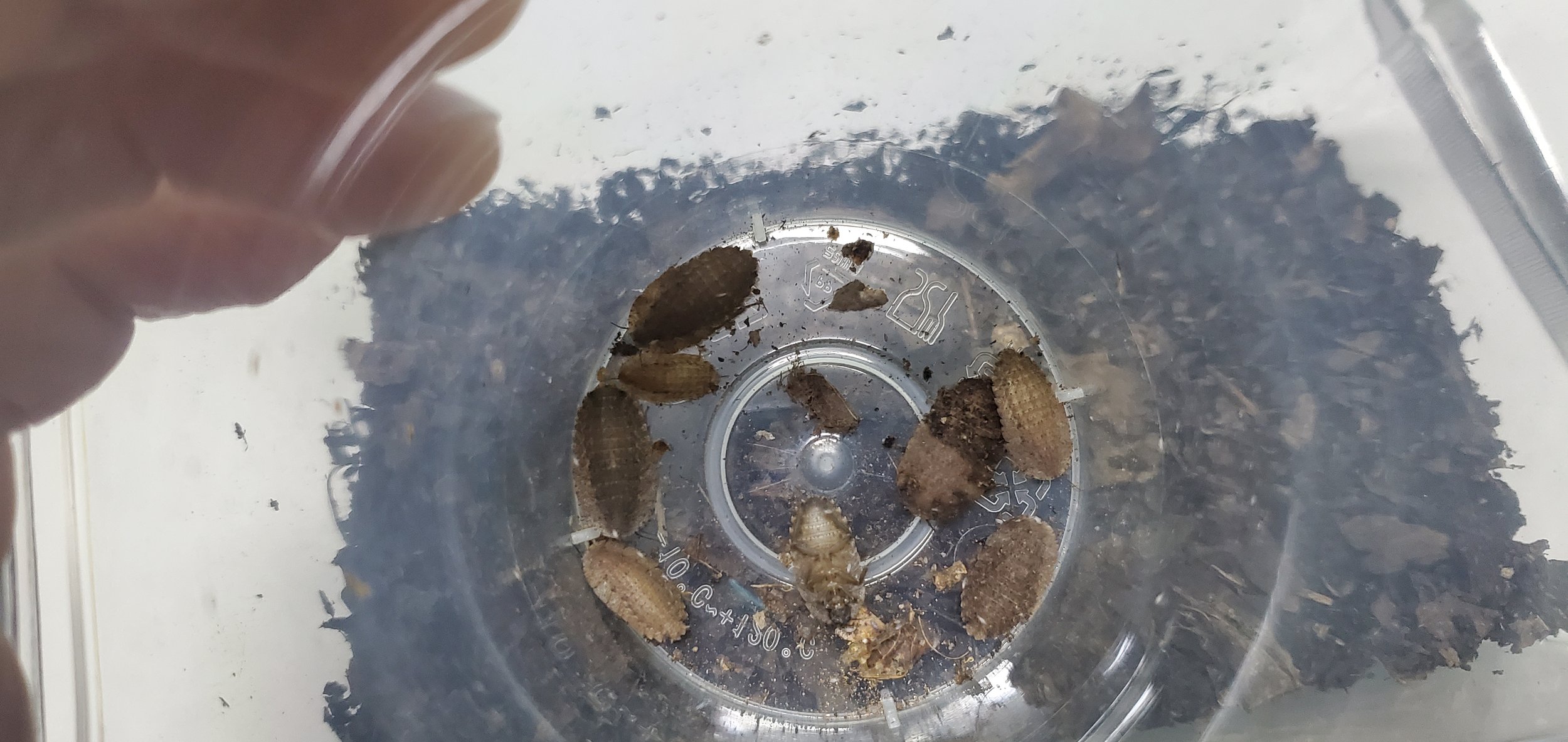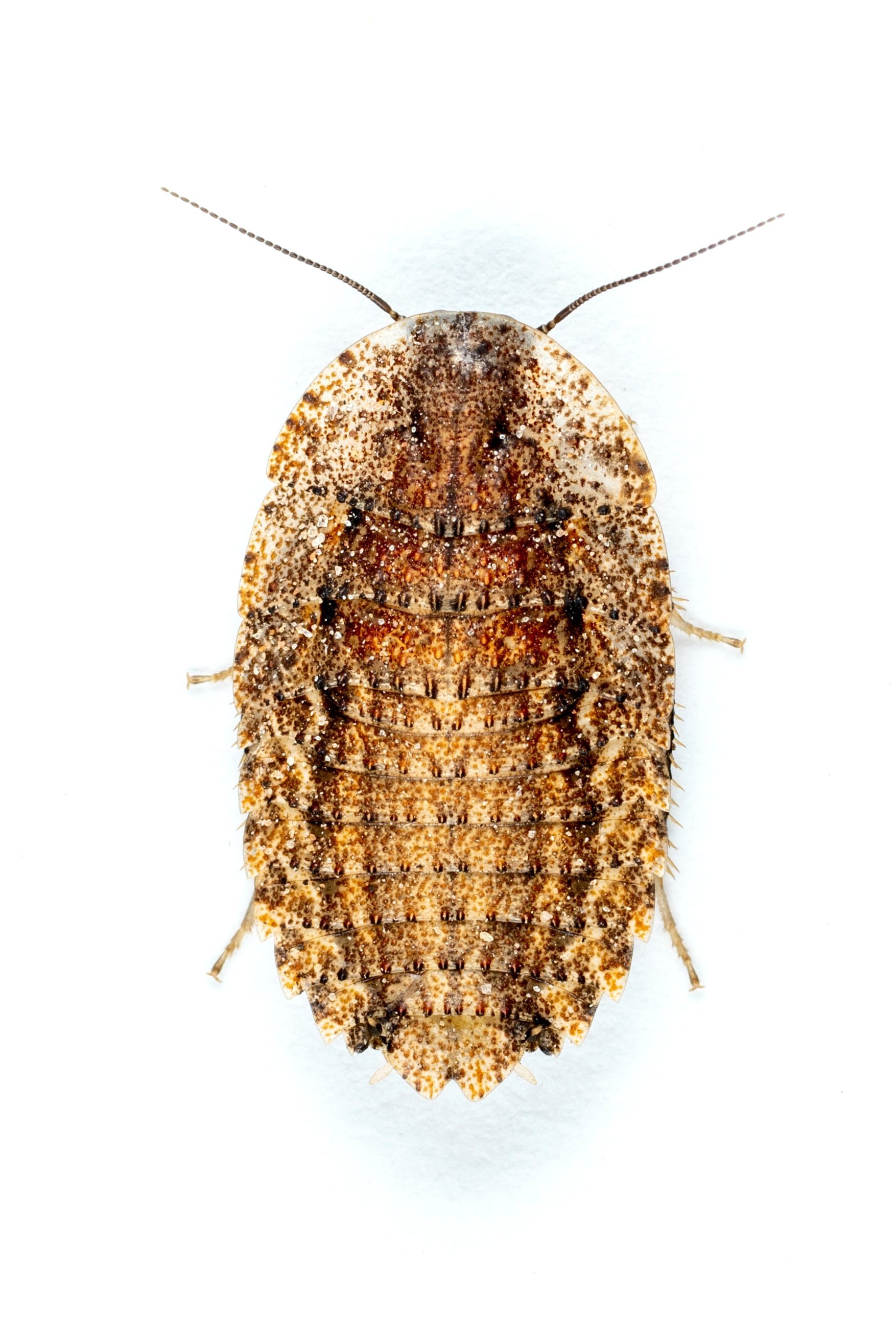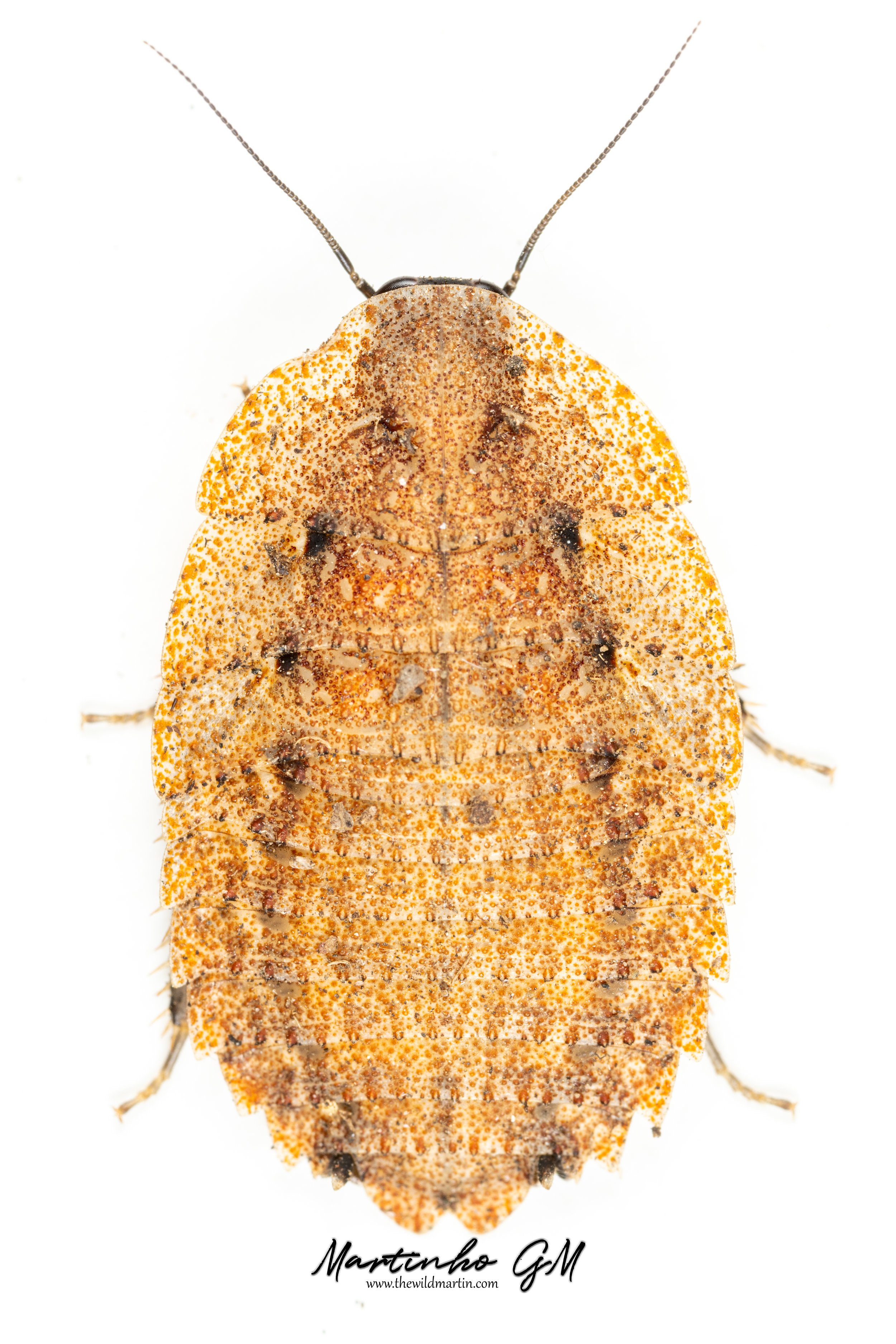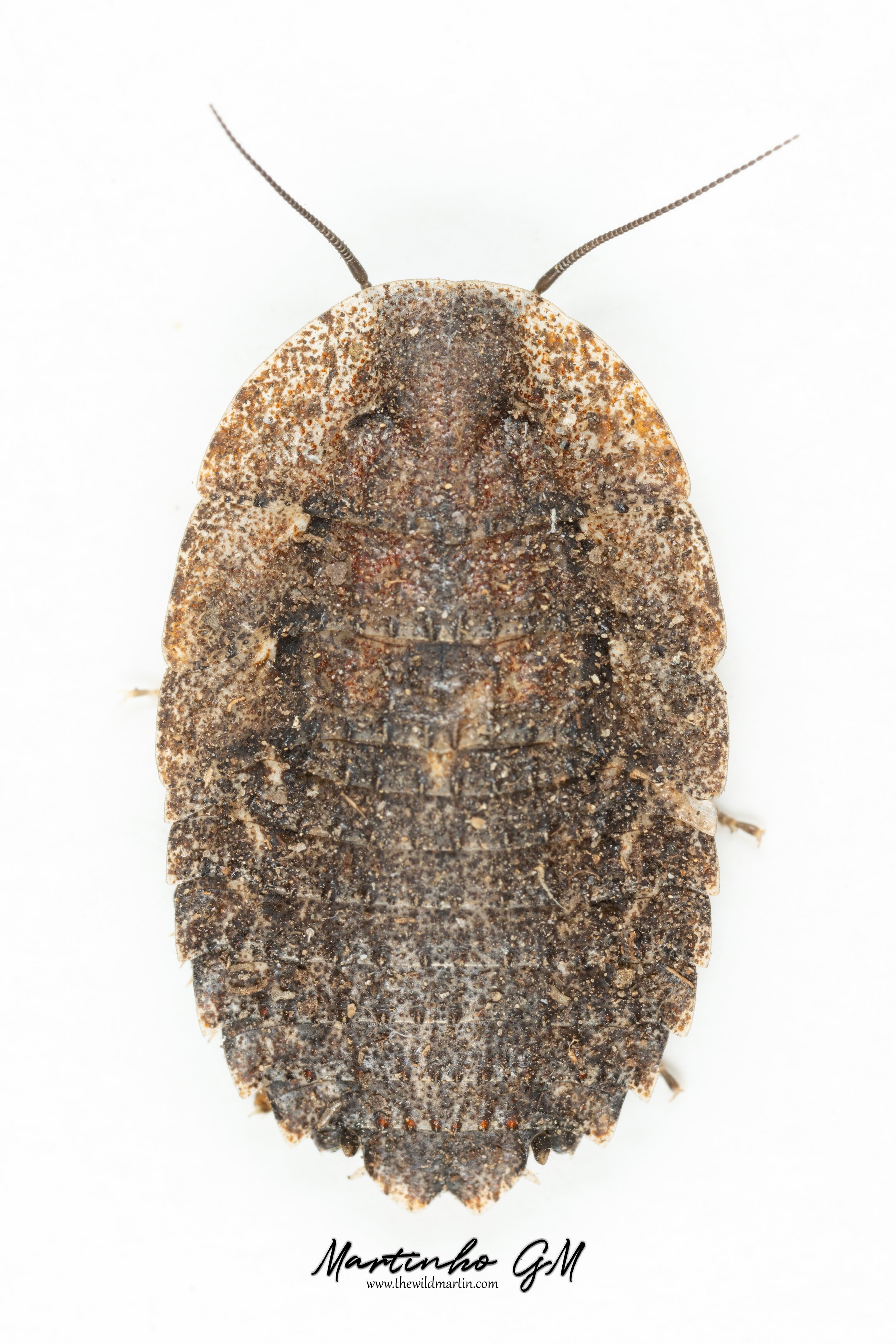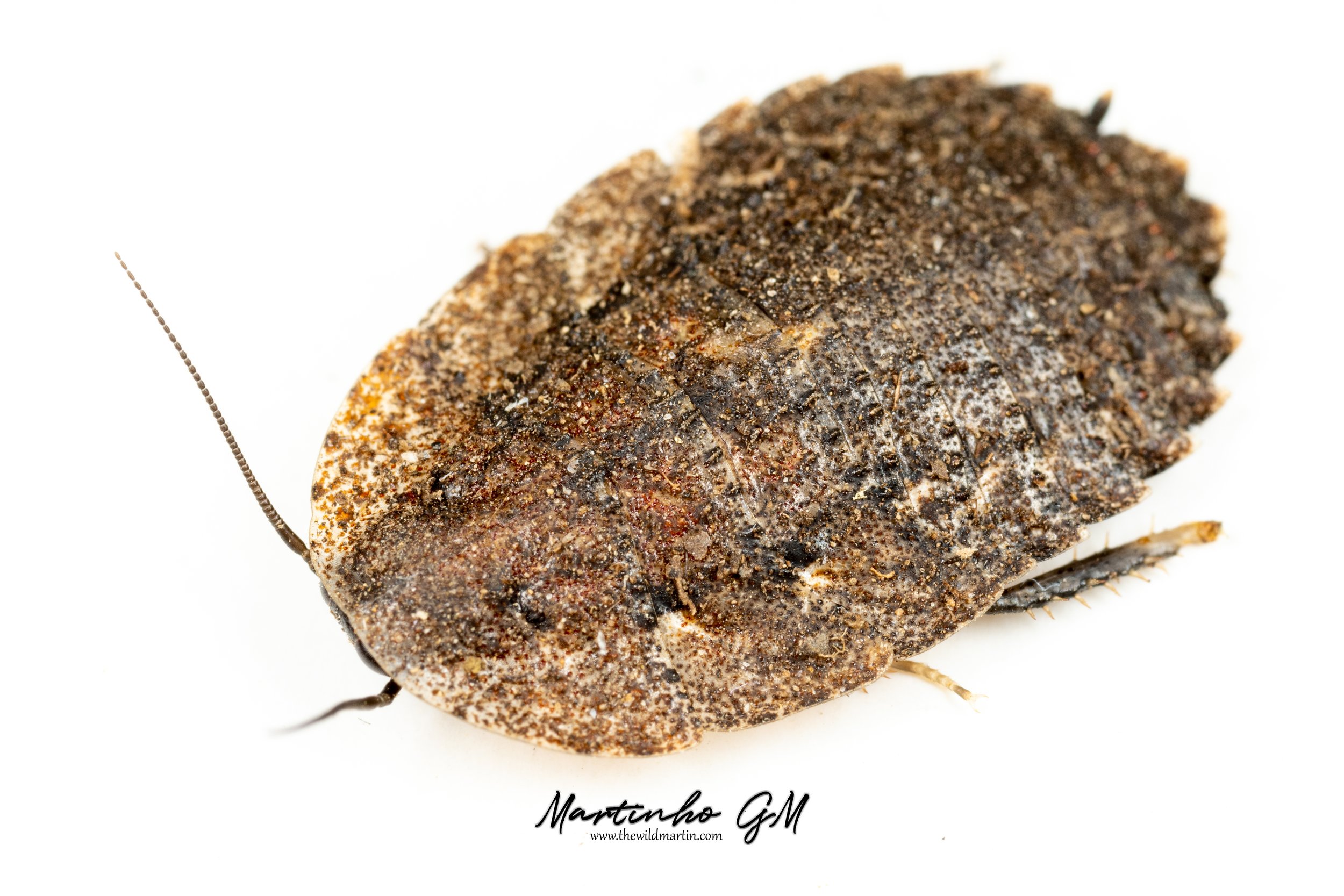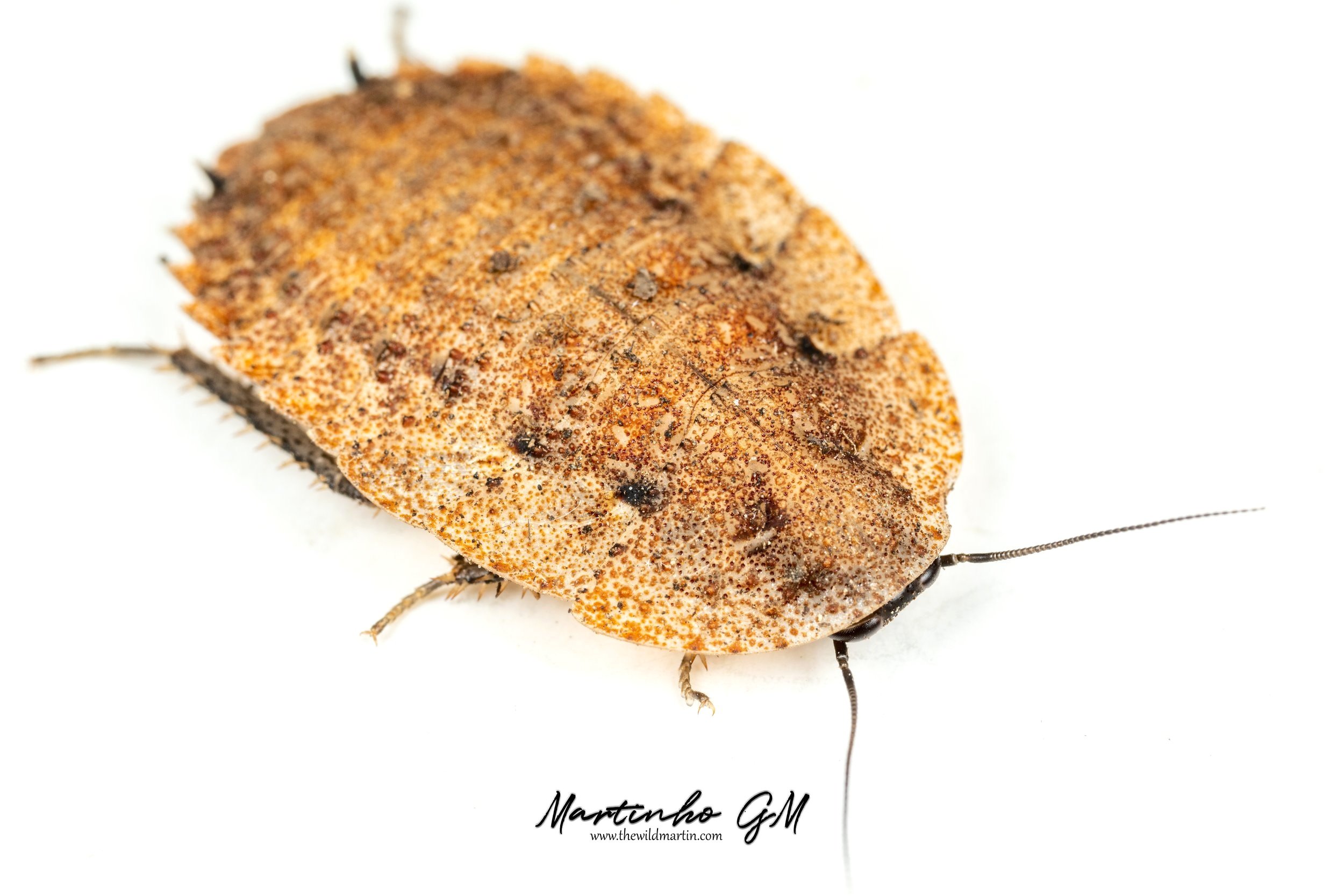Rhicnoda? Pseudophoraspis? My new Epilamprinae species
Welcome to another blog entry! Today we go back in time to December 2022, Nakhon Ratchasima Province (countryside) in Thailand, where I was spending my Christmas holidays.
In the same forest patch where I found the Ergaula silphoides, in the same night, and under one of the logs, I also found a single Epilamprinae nymph.
Epilamprinae nymph
For me the camouflage is absolutely stunning and the way it blends with the surrounding vegetation and surroundings is incredible. (Please hold on until I show you some macro photos later on)
I was very excited to have found a new species for my collection and couldn’t wait to find some more!
That unfortunately proved itself quite difficult. In the following couple of weeks, I only was able to find another 3 nymphs.
They were proving to be extremely hard to find imo.
Epilamprinae nymphs
Can you see how the two nymphs on left seem to be wet? Well, I found out that if I handled them too much, they would exude an oily substance, it doesn’t have any particular foul smell or anything of that nature, it seems to be just oil, probably, to make them either more slippery or maybe it contains some unpleasant taste chemical to prevent predators from eating them.
Epilamprinae keeping enclosure
I was keeping them inside a non ventilated box (mistake) with leaf litter from their collection site. There are two nymphs showing on the photo, can you spot them? :D
A whole month passed by without being able to find more, I kept going to the same spot and lifting all the logs I could find but to no avail.… until one night I managed to crack the code on how and where to find them exactly.
There was a particular area on that forest patch which was less dense in vegetation, with more leaf litter and that is where I started finding them…. not under logs, but under the leaf litter itself.
But to be able to spot them, I had to pace very slowly, brush the leaf litter, and watch closely to catch any movement afterwards… not an easy task by any means given their camouflage. But I did it!
In total I got another 14 nymphs of mixed sizes. I was very happy to be able to have the potential to establish this species in my collection now.
Unfortunately disaster struck… as I was on holidays, I was moving around multiple provinces in Thailand and sometimes would be absent from home up to 10 days… I would always feed them before leaving, but I totally forgot in this case that by mixing food with untreated vegetation, mold and bacteria would grow… and so it did during my absence, it killed almost all of the individuals, with the exception of 3 or 4, the ones that dug under the substrate to save themselves.
I was devastated…. but determined to find more!
I did find them, but not so big as the previous nymphs and not so many, only 7 or 8.
A bit disappointing but its life, live and learn.
Now moving onto the most interesting and challenging part. Identification and photos!
According to Cockroach Species Files - Thailand, there are only 7 potential Epilamprinae candidates:
Morphna badia
Morphna dotata
Pseudophoraspis grigorenkoi
Rhabdoblatta pedisequa
Rhabdoblatta trongana
Rhicnoda desidiosa
Stictolampra lurida
Both these Morphna species (adult males and females) are fully winged. Pseudophoraspis is known to have species where the females have vestigial wings, but in this particular species both adult males and females have complete wings. So we can exclude those at least.
For me the genus seems to be Rhicnoda, a quick Google Search will leave you with little doubts, but I may be wrong, and it will be necessary to wait until the nymphs reach maturity to even be able to attempt to identify them.
POST-PUBLISHING ADDENDUM : Dr. Chih-Ting Hsu from Taiwan was kind enough to educate me on this matter after my original post. Here are his own words:
”…at this moment, there's no possible way to distinguish Rhicnoda from Pseudophoraspis…Though Anisyutkin (1999) mentioned both Rhicnoda and Pseudophoraspis, he indicated that Rhicnoda - "is nearly indistinguishable from representatives of the above-mentioned genus Pseudophoraspis by head structure"…““…At that moment, Anisyutkin was not aware of brachypterous or micropterous Pseudophoraspis since "sexual dimorphism moderate" was included in the diagnosis of Pseudophoraspis he gave…”
“…those could be Rhicnoda or Pseudophoraspis. Or Pseudophoraspis could be a synonym of Rhicnoda…”
“…But presently there's no male of confirmed Rhicnoda since described species in this genus were either based on female or nymph. And we know there're some sexually dimorphic species in Pseudophoraspis. So it will be safer to tentatively id them as Pseudophoraspis…”
Dear Dr Chih-Ting Hsu, thank you for much for your help! Most appreciated!
So let’s wait and see. Damn you Epilamprinae!
Let me show you some macro photos now of their awesome color variation.
First things first, there isn’t any sexual dimorphism (in terms of coloration) because I already found a dark colored female, just as the male shown above.
I think this is just normal color variation across different stages of development. Someone could point that they are two different species, but I don’t think so, looking carefully at their structures, I think its the same species just with different pigmentation.
Rhicnoda desidiosa small nymph
Rhicnoda desidiosa male nymph
Rhicnoda desidiosa female nymph
Finally to wrap up the post, I leave you here the identification paper for Rhicnoda desidiosa.
Rhicnoda desidiosa Identification Paper
Thank you so much for your time to read the post, hope you have enjoyed it, please let me know down in the comments what you think, and see on the next one!
Cheers!






